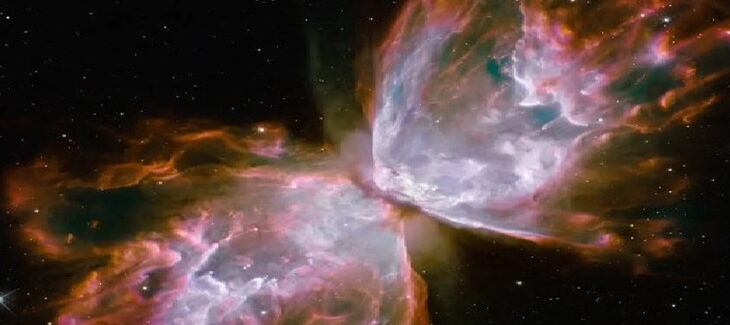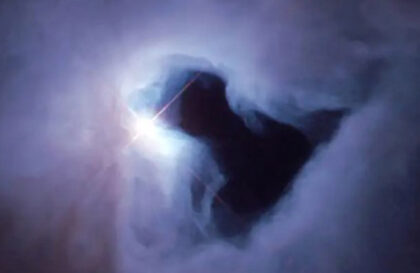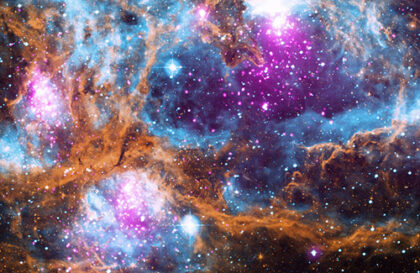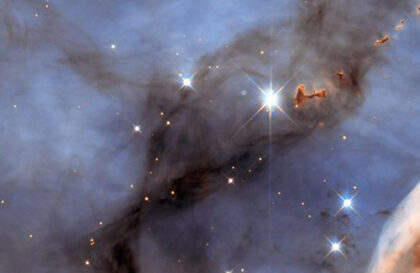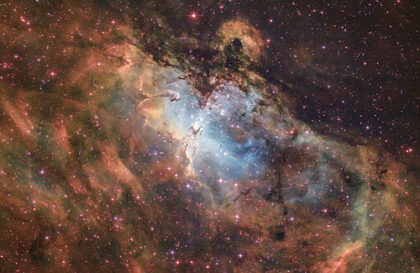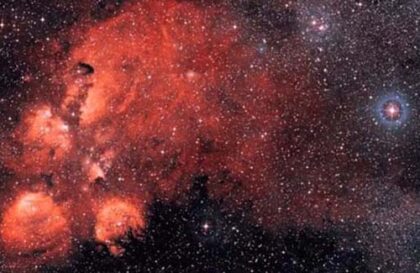Its central star is one of the hottest known, with a surface temperature of over 250,000 degrees Celsius (the Sun’s is 5,700 degrees Celsius), indicating its enormous size at formation.
The nebula, NGC 6302, is bright and one of the most complex planetary nebulae. Like many other objects in the night sky, it is named after flowers or insects. The span of its “wings” exceeds three light years.
The central star NGC 6302 evaded detection due to high temperature (high ultraviolet emission), a dust torus (absorption of light, especially ultraviolet), and a bright background. Initially, it was not visible in the Hubble images.
The improved resolution and sensitivity of Hubble’s Camera 3 revealed the faint star at the center. Its mass is 0.64 solar masses. It was initially much more massive, but some mass was ejected during the event that created the planetary nebula. The star’s luminosity and temperature indicate it has stopped burning nuclearly and is on track to become a white dwarf, fading at a rate of 1% per year.
The dust in NGC 6302 contains both oxygen-containing silicate molecules and carbon-containing polycyclic aromatic hydrocarbons (PAHs). Typically, stars are either oxygen-rich or carbon-rich, and the transition from one to the other occurs late in their evolution due to chemical changes in the atmosphere. NGC 6302 belongs to a group of objects in which hydrocarbons formed in an oxygen-rich environment.
This colorful planetary nebula was captured in 2009 by the Hubble Space Telescope during a shuttle servicing mission. A dust cloud surrounds the central star and crosses the bright cavity of ionized gas, almost in the line of sight. Molecular hydrogen has been discovered in a dust shell around a hot star. NGC 6302 lies approximately 4,000 light-years away in the constellation Scorpio.
Banner image: NGC 6302, as taken by Hubble Space Telescope. Credit: NASA/ESA/Hubble
Image credit:
https://www.nasa.gov
